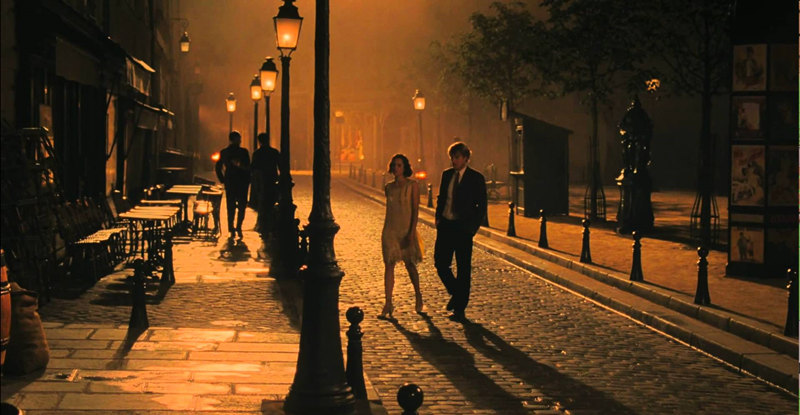I wonder if there is such a thing as being too good to be true, when that thing really is true?
The preface to “Reach for the Sky” tells us that “Douglas Bader has become a legend in his own life time. His courage was not only an example to those in War but is now a source of inspiration to many in Peace.”
Not that everything depicted in this 1956 biopic of Bader’s life through World War II is accurate. As the filmmakers admit, “For dramatic purposes it has been necessary in the film to transpose in time certain events in Douglas Bader’s life and also to re-shape some of the characters involved in the story.”
Fair enough. It is a movie of Bader’s life, after all, not a History Channel documentary. For one such as I, unfamiliar with the man or his exploits, “Reach for the Sky” provided a fairly engrossing and reasonably involving account of Group Captain Sir Douglas Robert Steuart Bader’s (1910-1982) character and experiences, painting him as a popular, celebrated fighter pilot with a breezy confidence.
The film’s director, Lewis Gilbert, who later would do “Sink the Bismark,” “Alfie,” and the Bond films “You Only Live Twice,” “The Spy Who Loved Me,” and “Moonraker,” also adapted the screenplay from the book by Paul Brickhill. My guess is that the film is a pretty literal rendering of the story, given the way it moves along at a healthy clip through the first half of Bader’s life (from 1928 through the end of WWII).
The story begins as Bader (played by the well-liked and amiable English movie star Kenneth More) applies for flight school. We see immediately he’s a personable fellow, at least the way More plays him in his typical devil-may-care manner (if you’ve seen More in “Genevieve” or “Doctor in the House,” you’ll know what I mean). Although Bader resists authority, rules, and following the book, he learns to fly skillfully, and the service tolerates him. He’s something of a show-off as well, always cocksure of himself, and it isn’t long before he crashes his plane, losing both his legs and almost his life in the accident.
Yet, on the verge of death, Bader refuses to die. Nor does he give up his will to fly again. The guy was tenacious, according to the movie never accepting defeat. Despite the loss of his legs, he keeps up his good cheer, having an indomitable, indefatigable spirit. When he gets a pair of artificial legs, he insists upon using them without the aid of a stick, a cane, and the filmmakers give over a good deal of time to Bader’s learning to walk on his own.
Meanwhile, Bader meets, falls in love with, and marries a young woman, Thelma (Muriel Pavlow), who admires his will and falls for his charms. She is patient and understanding and proves the perfect match for his temerity and cheek.
But he still wants to fly again, and he gets his chance when England enters WWII and the country needs good fliers. From there, Bader distinguishes himself as one of Britain’s finest flying aces.
The film has a lot going for it. When it’s not brash, it’s touching, with director Gilbert maintaining a strong forward tempo. The flying sequences and aerial combat scenes are exciting, sometimes intense, even if they are few and far between; this is mainly a character study, remember. More’s performance is at the heart of it all, a bigger-than-life realization that would appear to fit the subject matter. More is in practically every scene, and he’s so likable, he’s hard to resist.
However, there are several nagging details to contend with. For one thing, the movie is too long at about 130 minutes, with too much emphasis on the camaraderie of the men in Bader’s company at the expense of much tension, suspense, or audience involvement; in other words, the movie bogs down in too many places. Moreover, composer John Addison’s musical score, which tries hard to be properly inspirational, can also be melodramatic, overdoing a good thing at key, climactic moments in the story and sounding today a little corny. Like the main character, the music is rather too full of bluster.
Also, be prepared for a fair amount of “Good show, old sport, old man, old chap, old boy,” that sort of talk, almost as if the film were parodying an old British war movie. And, war or no war, there is always time for a spot of tea.
Overall, “Reach for the Sky” is often a stirring account of one man’s struggle to do his best and prove his worth under the most trying circumstances. Still, it seems just as often a workaday film, sturdy rather than exhilarating; and, as I said at the beginning, if it didn’t really happen, it would be hard to believe.
BAFTA (the British Academy of Film and Television Arts) accorded “Reach for the Sky” a Film Award for the Best Picture of 1956, and they nominated several other people involved in the production, including screenwriter Gilbert, in other categories. It remains a popular and well-regarded film in the annals of British cinema.
Video:
The VCI video engineers digitally restored the film to generally good effect. They retained most of the film’s original theatrical aspect ratio at 1.78:1, and they do more than an adequate job cleaning up the black-and-white print. They appear to have spruced up what was probably a fair amount of grain, noise, and age marks, leaving just enough of each to remind us that the filmmakers made the movie over half a century ago. You see only a minimum of flecks, specks, grain, and noise on screen, and almost no instances of lines or fades. The B&W contrasts shows up well, with decent definition and only a small degree of edge enhancement noticeable. There is some minor jerkiness on occasion, but it shouldn’t bother most viewers.
Audio:
The Dolby Digital monaural soundtrack is surprisingly strong on dynamics and impact, and its midrange is clear and quiet. That said, you won’t find much in the way of frequency extremes here, and dialogue can sometimes appear a bit pinched or nasal. If you’re a fan of old movies, you’ll hear nothing out of the ordinary involved.
Extras:
VCI Entertainment offer several extras on the disc, not much but enough to keep one occupied for a few minutes after the movie ends. The first item is a one-minute, self-moving stills gallery; the next is a theatrical trailer in a 1.33:1 format; and the third is a set of twelve scene selections. English is the only spoken language offered, with optional English subtitles.
Parting Thoughts:
While “Reach for the Sky” may have an unfortunate title, one that may remind more than a few potential buyers of an American Western rather than an English War picture, it does tell an inspirational story. If it doesn’t quite have the red-blooded emotional appeal that might have elevated it beyond the merely competent, the movie is certainly appealing. If you don’t know Douglas Bader’s story, this is as good a place as any to start learning about it.


